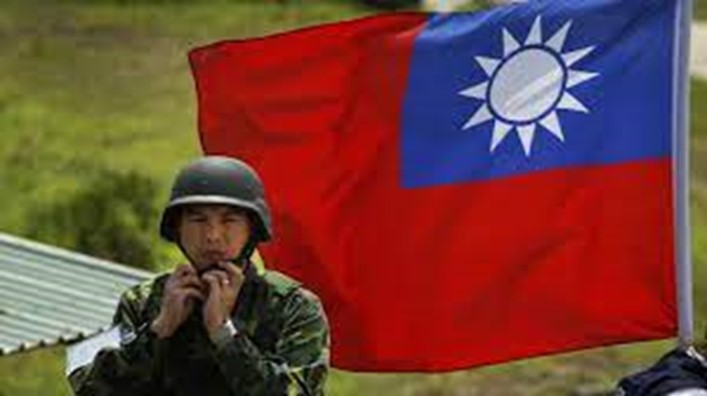
Taiwan, also known by its former name Formosa, is a renegade province of the People’s Republic of China. Being the renegade province, Taiwan remains the bone of contention between China and the United States (U.S.) and its allies. Taiwan is an island and the largest island of China, whereas, the Hainan Island is the second-largest island.
During the Chinese Civil War starting on August 1, 1927, till its culmination on October 1, 1949, with the Communist victory, the forces led by Chairman Mao Zedong fought against the Nationalist Kuomintang led by General Chiang Kai-shek. Chairman Mao and the Chinese fought gallantly against the Nationalist Forces and defeated them and forcing them to flee to the island of Taiwan. Till that time onwards, Taiwan enjoys unconditional support from the U.S. and its allies and continues to call itself as Republic of China; however, it fears the People’s Republic of China and has not declared its political independence until now.
Russia’s Pivot to Asia
Russia is a global power hailing from Asia. The majority of European nations are members of the European Union (EU) and the North Atlantic Treaty Organization (NATO), and have a hostile orientation towards Russia. Besides, Europe’s dependence on Russia for oil and gas, the European leaders seem ever busy in hurting the Russian interests.
Taiwan’s geographical location is very important not only for China, but it is equally significant for Russia. Taiwan has seen three major crises, i.e., in 1954-1955, 1958, and 1995-1996. During these three separate events, Taiwan presented the picture of being a flashpoint involving great powers. However, besides an overwhelming presence of the U.S. Navy and its allies in the vicinity of Taiwan, Russia showed considerable restraint and its naval forces maintained minimal presence.
The U.S. and its regional allies have dangerous military and naval presence in the West Pacific, especially in the South China Sea, East China Sea, Philippine Sea, Yellow Sea, Sea of Japan, and Sea of Okhotsk. For instance, the United States Forces in Korea (USFK), the U.S. Naval 7th Fleet at the Japanese port of Yokosuka, and the U.S. military presence at the island of Guam are some of the examples which one way or the other, strengthens Taiwan.
In such a scenario, it is very important to understand that the Russian Pacific Fleet at the Vladivostok could be in a seriously dangerous position. The Russian Navy is maintaining and has maintained a very passively peaceful posture in the West Pacific. However, such a posture is interpreted in a wrong manner by the West and the U.S.
Russia’s ‘turn to the East’ (povorot na vostok)
Since 2014, Russian policymakers have been making attempts to shift their focus towards the East. After Crimea’s legal inclusion in Russia in March 2014, the West maintained a very hostile rhetoric towards Russia and limited their dealings. It was a strategic necessity for Russia to maintain its interests by engaging the East.
Russian Naval Drills
The Moscow Times reported on June 18, 2024, that the Russian Navy was to hold military drills in the Sea of Japan and the Pacific Ocean. It was told by the Russian Navy that almost “40 ships, boats and support vessels as well as about 20 planes and helicopters” will also take part in the drills.
The military drills will also take place near the Kamchatka Peninsula, which is surrounded by the Sea of Okhotsk and is strategically very important for Russia.
Russian Navy and Taiwan
Though, Taiwan is the renegade province of China and eventually both are destined to be united. However, the Japanese islands including the Yonaguni, Taketomi, Ishigaki, Tarama, Miyakojima, and Okinawa are instruments of power projection in the East China Sea and have geographical proximity with Taiwan. It is a known fact that Japan has been acting like a U.S. proxy in the West Pacific and could readily provide its islands for the U.S. armed forces.
Taiwan fears Russian power and it is incumbent upon the Russian Navy to enhance its presence in South China Sea and Philippine Sea. It is very unfortunate that under the guise of Freedom of Navigation and Japan’s former Prime Minister Shinzo Abe’s concept of Free and Open Indo-Pacific (FOIP), Russian interests are constantly being squeezed and undermined systematically.
Conclusion
No doubt that the Kamchatka Peninsula located in the Sea of Okhotsk is very important for the Russian Navy. However, the Russian Navy must enhance its presence in the South China Sea, East China Sea, Philippine Sea, Yellow Sea, Sea of Japan, and Sea of Okhotsk.
With Russia’s Special Military Operation in Ukraine, the West has been very careful in enhancing its military presence in the Pacific to increase politico-military pressure on Russia. Such a move is also calibrated to divide the Russian military attention in Ukraine. However, with Russia’s naval move in the vicinity of Taiwan could give a clear message to the West and the U.S.
Simon Westwood – is a Masters student at the Dublin City University (DCU), Ireland. He is also a Research Assistant at the DCU’s Department of History, exclusively for the online magazine “New Eastern Outlook”.
